Hiking in the Applegate Valley — a place where the Coast Range, Siskiyous and Cascades meet in Southern Oregon — means a mix of marine, rainforest, oak woodland and desert blooms, many of which make cameos along the trails.
“Every major ecosystem in the West collides here,” says Applegate Valley conservationist, author and trail advocate Luke Ruediger.
This means a hiker can cross sunny fields of California poppies one moment, then head into canyons filled with rain-loving trilliums the next. It means finding warrior’s plume on one end of the valley and monkeyflower on the other. You’ll also see blooms found nowhere else, like Applegate stonecrop and a Southwestern Oregon local, Gentner’s fritillary. Look for them along these six trails, each of which are well mapped, well maintained and full of wildflowers from March to July, depending on the location.
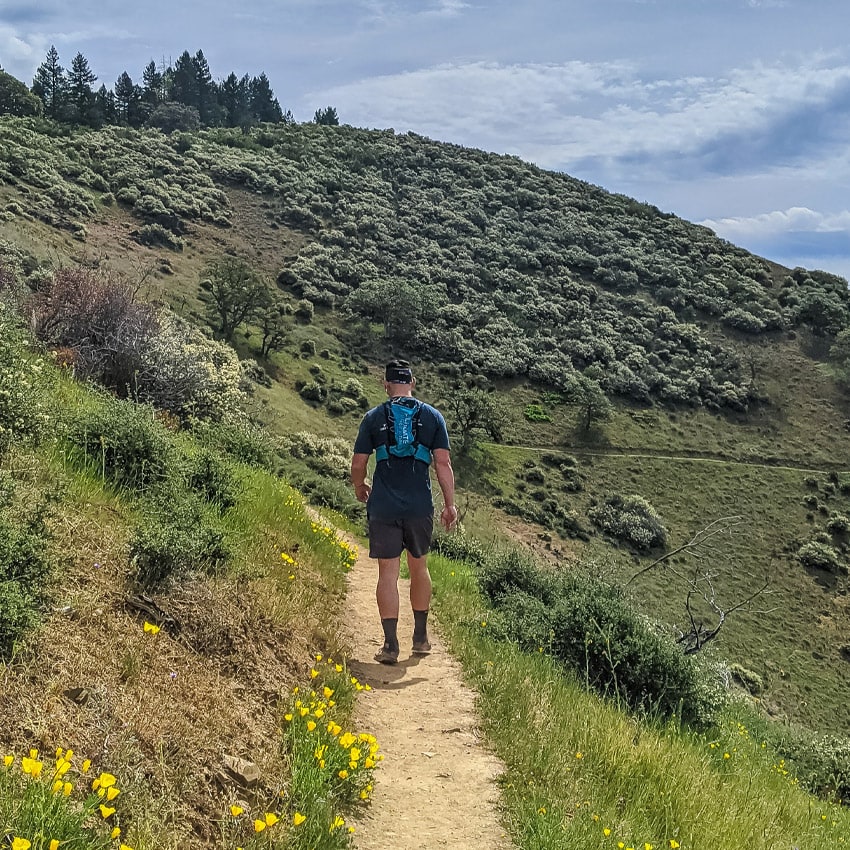
A Signature Trail With Soaring Views
About 6 miles south of Jacksonville, the East Applegate Ridge Trail — called “East ART” by residents — was recently designated by the Oregon Trails Coalition as a signature trail that showcases one of our state’s iconic landscapes. Applegate residents love it for its soaring views from Burnt Ridge — not just of the Red Buttes and the Siskiyou Crest but of paraglider pilots launching from Woodrat Mountain. Since it’s located in an area of the Applegate Valley known for its sunny weather, be sure to bring a hat, water and sunscreen. Along this trail spot hound’s-tongue, balsamroot, columbine, silver lupine and red dabs of Indian paintbrush from April to June.
For a level hike, start at the eastern trailhead, accessed via gravel road near mile marker four of Sterling Creek Road. Hike just over 2 miles in from the parking lot and you’ll arrive at a bench with great views. This is a good turnaround point. With two cars, you can hike the entire 5.6-mile trail by leaving one at the western trailhead on Highway 238. Be aware that this adds a steep grade to your hike.
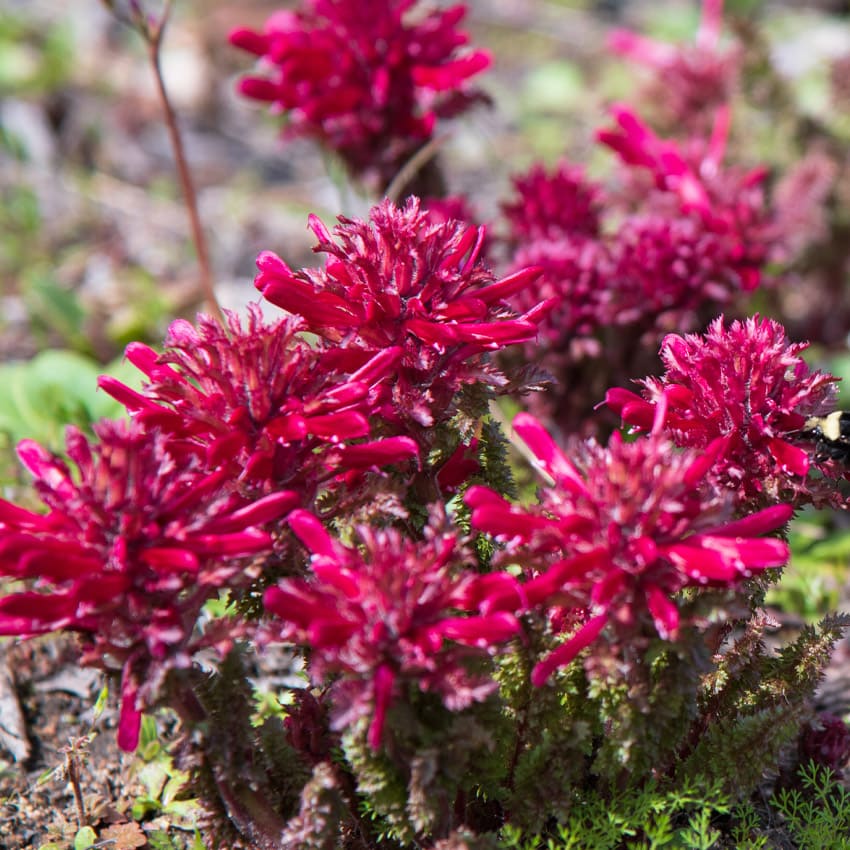
Hill Climb With Cool Breezes and Ferns
The Applegate Valley generally runs hot and dry, despite being only 60 as-the-crow-flies miles from the Coast. Coastal fog can be felt in the Cathedral Hills, a well-groomed trail system minutes from downtown Grants Pass. Here, 10 miles of trails ply through forested dells and up to big Rogue Valley views. The cool, fern-friendly climate, combined with mixed soil types, inspires an unusually robust wildflower display.
Waves of color start in April and continue through July. Expect a succession of varieties, including carpets of shooting stars, phlox and one unique to the area, warrior’s plume. Also look out for the largest whiteleaf manzanita in Oregon, which thrives here. In spring it produces endearing pinkish-white flower clusters.
With so many choices, you can customize a hike that matches your gusto and time constraints, from a steep workout on the Manzanita Tunnel Trail to an easy cruise on the Outback Loop. Routes are well marked and color-coded by difficulty level. There are three trailheads, but the Espey trailhead has the most parking. Be on the lookout for poison oak.
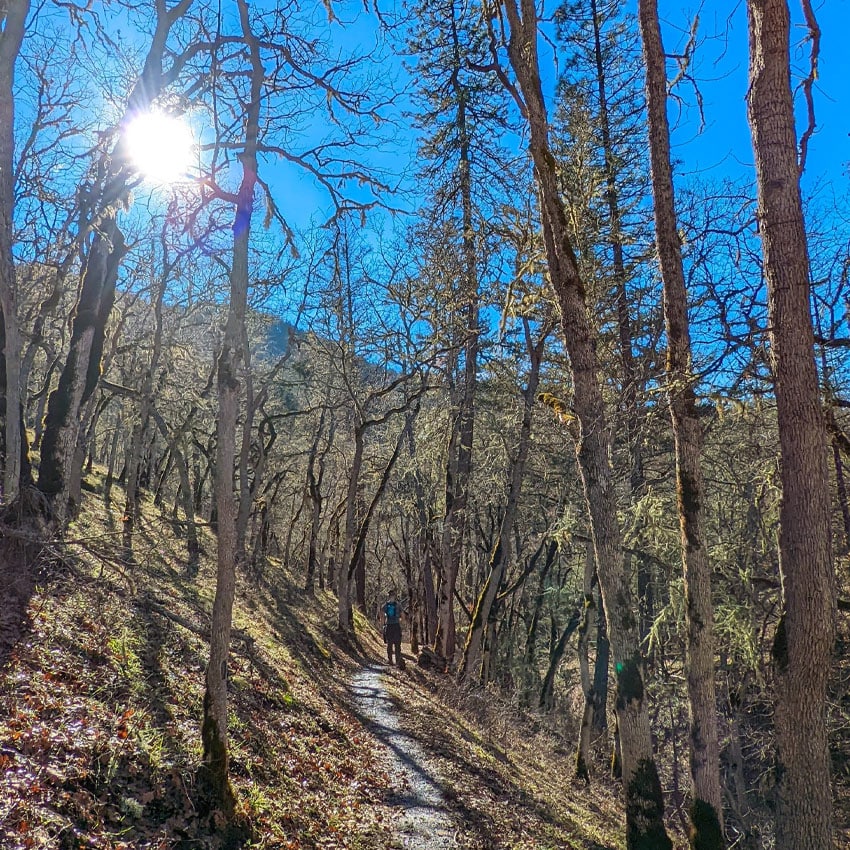
From Gold Mining to Golden Flowers
Minutes away from the East Applegate Ridge Trail, also south of Jacksonville, the 26-mile-long ditch along the Sterling Mine Ditch Trail was hand-dug in 1877 to procure water for hydraulic gold mining in the area. Some relics of that era remain — a tunnel, flume, headgates — but these days the route provides access to a different kind of gold: bleeding hearts, wild roses, three types of fritillary, rattlesnake orchids and many other species. The best mix of flowers occurs from April to June.
Now a well-maintained route, the trail can be accessed from six different trailheads. The Sterling Mine Ditch Trail itself is level, but the short access trails are moderately steep. A classic 4.7-mile loop starts at the Bear Gulch Trailhead off Little Applegate Road and emerges 4 miles later at the Tunnel Ridge Trailhead. Reunite with your car by strolling a quiet half-mile stretch of Little Applegate Road. This hike features a masterpiece of a madrone. No coordinates needed — you’ll know it when you see it.
Another stellar wildflower section starts at the Tunnel Ridge access point and ends 7 miles later at the Little Applegate Trailhead. The habitat variations on this stretch are particularly pronounced, with the trail meandering through oak woodlands, thickets of chaparral, open grasslands and small patches of mixed-conifer forest.
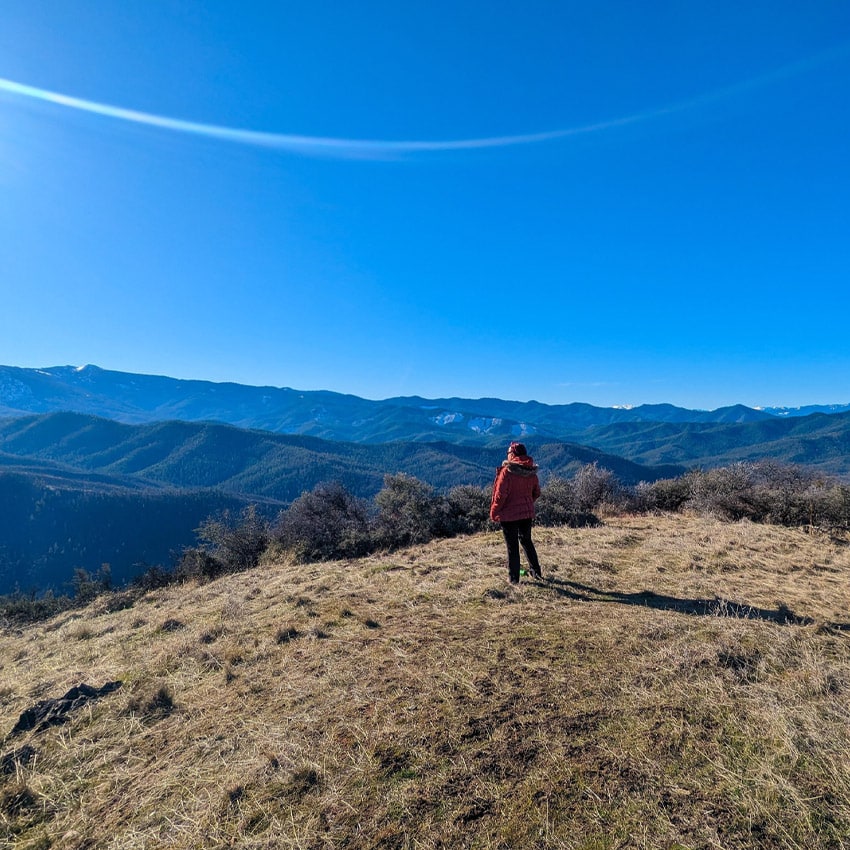
Wildflower Confetti and Big Views
To access a nice and easy amble on the Sterling Mine Ditch Trail, head a quarter-mile down from the Wolf Gap trailhead, one of Sterling’s access points. The nearly level 2.5-mile out-and-back trail to the Applegate/Siskiyou Viewpoint is a wildflower lover’s delight. Come spring you’ll find popcorn flowers in the millions. The floral confetti is punctuated by fritillary, shooting stars, paintbrush and others. The walk culminates in a rare flat spot with a fetching 270-degree view of the Siskiyou Crest, the Red Buttes Wilderness and the Applegate Valley. Watch for slippery conditions in wet weather.
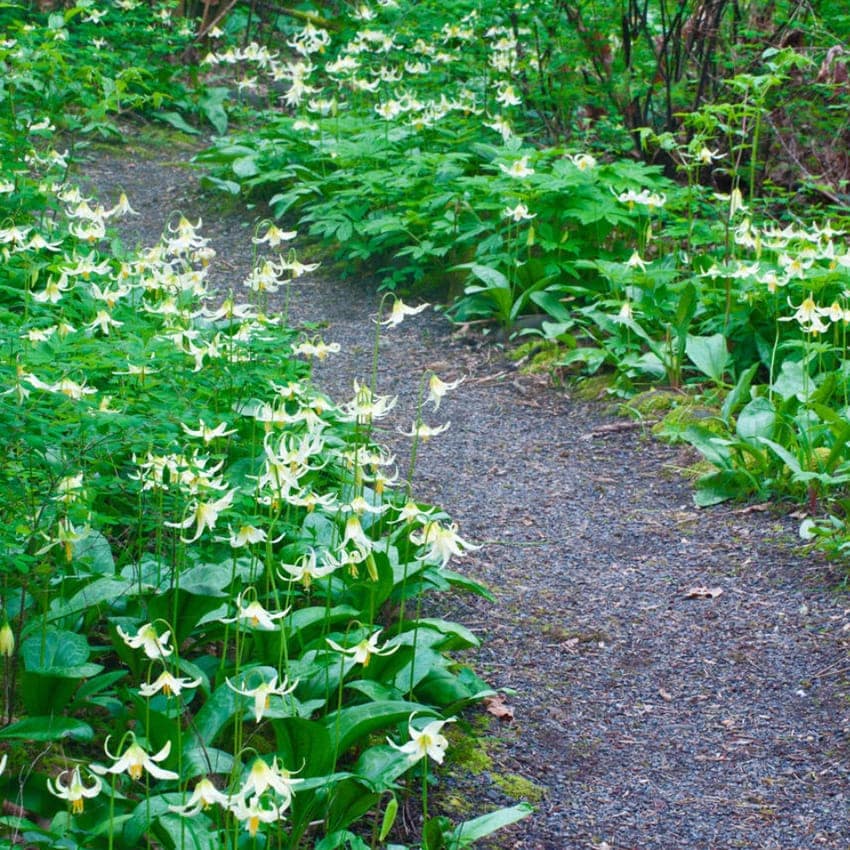
Sunny Meadows Meet Deep Forests
West of Medford, the Enchanted Forest Trail is tucked up in the vineyard-rich Slagle Creek area of the Applegate. At 1.7 miles, the out-and-back path isn’t long or particularly steep, but the last section requires a steady huff. The wildflower display here kicks off in March and continues through June.
This route opens with an airy meadow. Look for fawn lilies, shooting stars, spring gold, larkspur and warrior’s plume. Further along, the plot thickens when a mossy gallery of old-growth forest closes in around you with trillium and bleeding hearts aplenty. The last section of the trail inclines up to a small saddle with a view of Slagle Creek.
The 1.5-mile Felton Memorial Trail spurs off the Enchanted Forest Trail and gently rolls through a madrone-fir forest with flower-filled openings and views of the Slagle Creek watershed. Buckbrush chaparral and blueblossom ceanothus court pollinators with a bloomy perfume in spring. Park considerately and respect private-property signs.
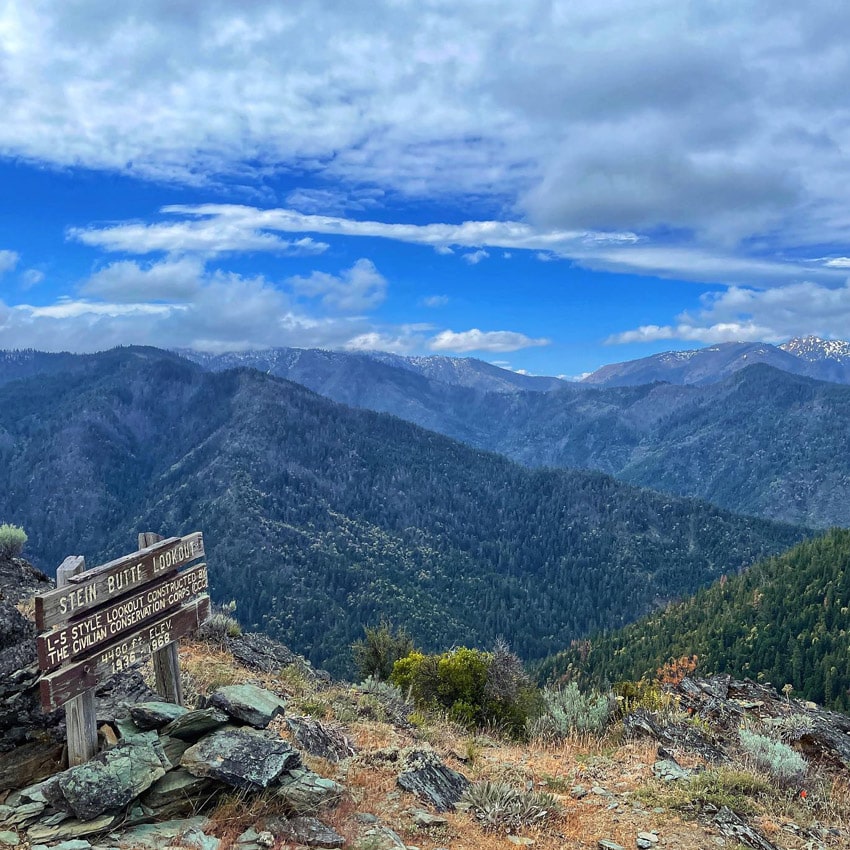
Butte Climb With a Swim Reward
For flower enthusiasts up to the challenge, the 2,480-foot climb on the Stein Butte Trail just south of Jacksonville is a good pick. There are plants flowering on Stein Butte all summer, but May and June are optimal.
Starting at the south shore of Applegate Lake across from Seattle Bar, power up the path through an old-growth forest. Along the way, look for rare plants such as Kellogg’s monkeyflower and a native succulent that only grows in the local watershed, Applegate stonecrop. More common flowers include rubber rabbitbrush, coyote mint and Oregon sunshine.
A ridge 2.5 miles into the hike delivers a rewarding Applegate watershed view and makes for a satisfying turnaround point. If you’ve got more energy, complete the 4.5-mile hike and arrive at the summit,where pink-petaled Siskiyou lewisia grows among the rocks. Hike back down, or loop back on the New London Trail to Elliott Creek Road and to the parking area near Seattle Bar. A post-hike swim in Applegate Lake might be in order.
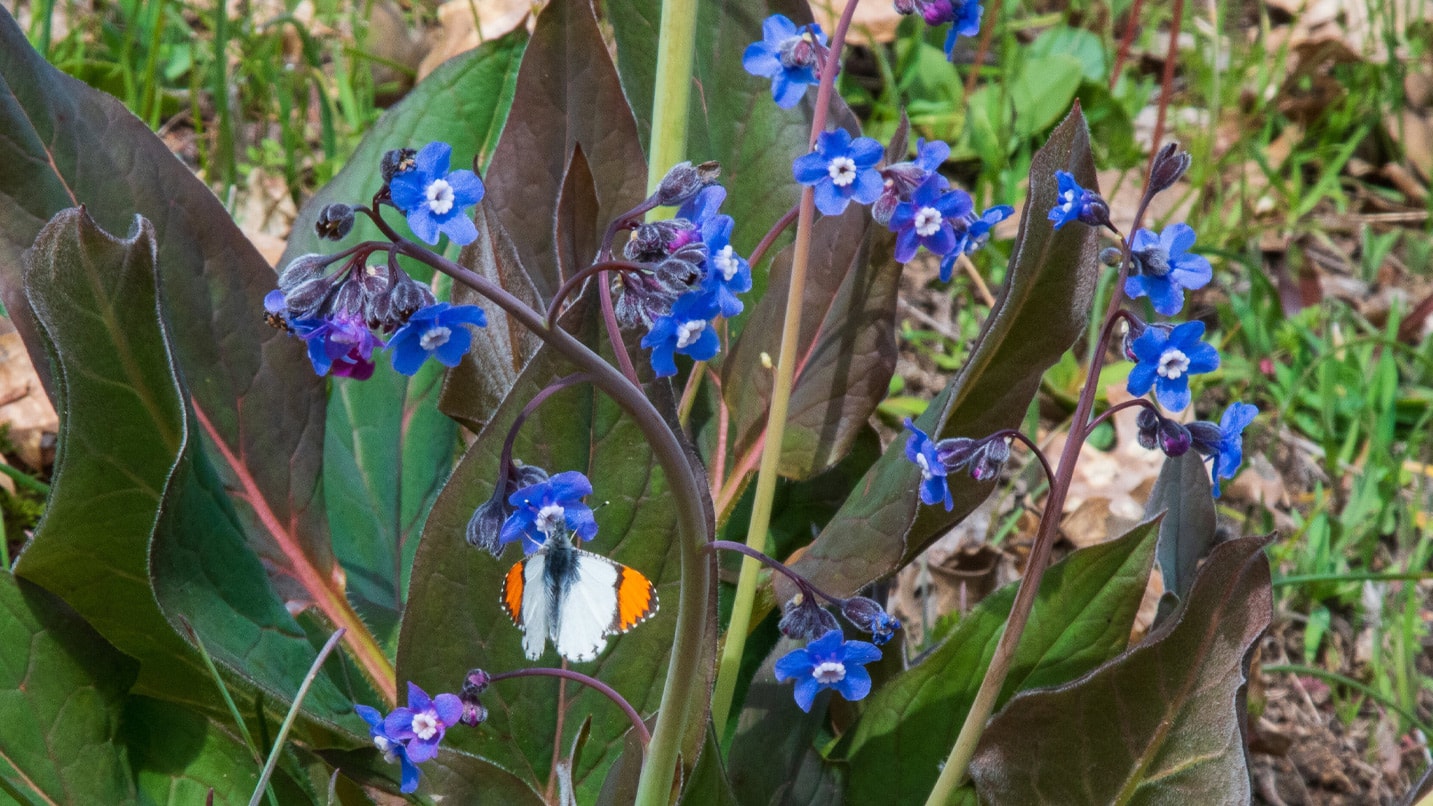
If You Go:
- For maps and more information about Applegate Valley hiking trails, visit the websites of community-led advocacy groups like the Siskiyou Upland Trails Association, Siskiyou Mountain Club and Applegate Trails Association.
- No permits are needed for these areas, and dogs are allowed on all of the trails mentioned. Off-leash is acceptable at the Sterling Mine Ditch Trail and the Siskiyou/Applegate View point hike, but leashes are recommended on the East Applegate Ridge Trail and required everywhere else.
- To learn more about Applegate Valley flora, The Klamath Mountains: A Natural History, published in 2022, provides a deep dive.



